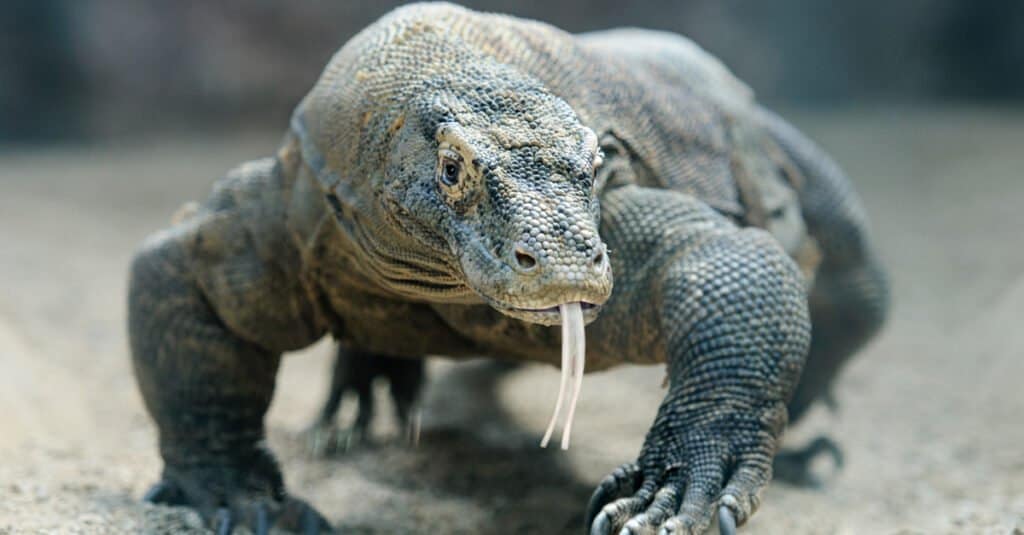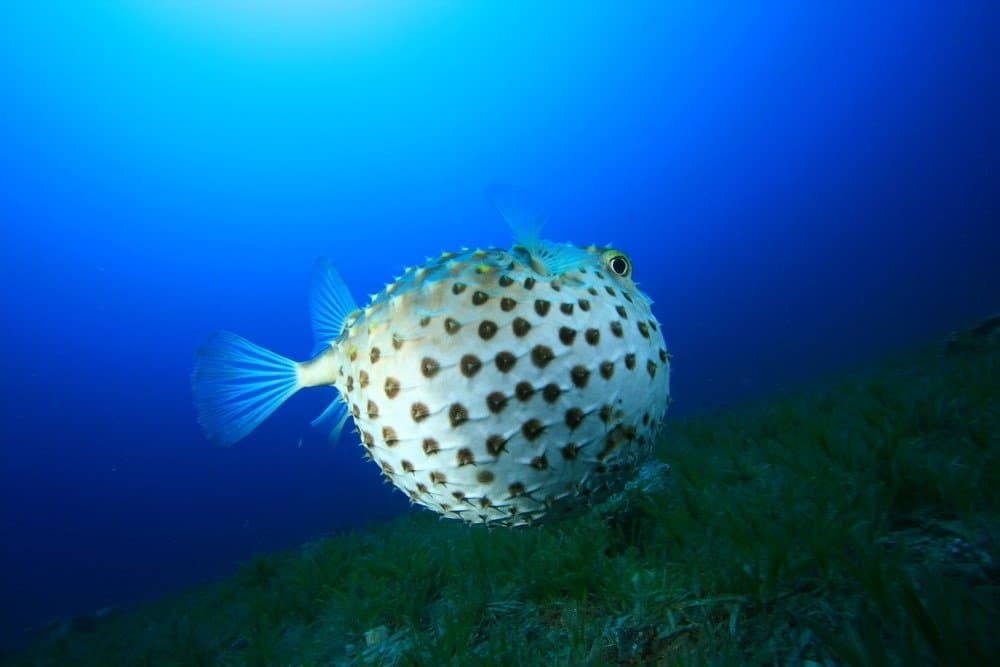We often hear people talking about venomous and poisonous animals and you’d easily be forgiven for thinking that they mean the same thing. The truth is they actually mean completely different things, but quite often the two terms are used interchangeably.
So, just how alike are they? Well, both venomous and poisonous animals use toxins as a weapon and this is used to either kill prey or to defend themselves from predators. However, the key difference is how they deliver it, and that is what determines whether an animal is poisonous or venomous. Join us as we learn all about the differences between poisonous and venomous animals.
Comparing Venomous Animals vs Poisonous Animals
Poisonous and venomous are both words that can be as frightening as they are fascinating when we’re discussing animals – especially when it comes to some of the deadliest animals in the world. Although it’s an easy mistake to make, they are often used incorrectly. There are actually some pretty big differences between poisonous and venomous animals. However, just to make things even more interesting (and confusing), there are even some animals that are both poisonous and venomous.
Check out the chart below to learn a few of the main differences.
| Venomous | Poisonous | |
| Delivery Method | Injected – must cause a wound to deliver it | Inhaled, eaten, or touched |
| Where does the toxin come from | The animal generates their own venom | From their habitat or anything they have eaten |
The 2 Key Differences Between Poisonous Animals and Venomous Animals

Komodo dragons have venomous saliva which is injected when they bite their prey
©Anna Kucherova/Shutterstock.com
Venomous vs Poisonous: Delivery Method
The biggest difference between poisonous and venomous animals in the delivery method of the toxin. Venom must be injected to be effective and therefore the delivery method must cause a wound. Venom can be injected through fangs, stingers, or spines. By injecting the venom directly into the body, the venom bypasses the digestive system and enters the bloodstream. Venomous animals usually use their venom to kill or subdue their prey. One of the most interesting venomous animals is the komodo dragon. Komodo dragons are venomous but don’t have fangs, stingers, or spines. Instead they have venomous saliva which gets into the bodies of their prey when they bite them.
However, with poisonous animals the poison must be ingested – either by being touched (absorbed through the skin), eaten, or inhaled. This is known as passive delivery. Poisonous animals usually only use their poison as a defense mechanism to avoid being eaten by a predator. Many poisonous animals secrete their poison through their skin – such as poisonous frogs. However, pufferfish contain tetrodotoxin in their liver, ovaries, and intestines, which makes them extremely dangerous to eat as well as to touch.
Venomous vs Poisonous: Where does the Toxin come From?
Another major difference between poisonous and venomous animals is where their venom or poison comes from. Venomous animals generate their own venom within their body and have a specialized method of delivering it (fangs, stingers, spines). Venom is extremely complex and has evolved for the specific purpose of killing or subduing prey. This is one of the reasons that it needs to be injected into the bloodstream to be effective.
However, poisonous animals are the complete opposite. Instead, most poisonous animals get their toxin either from their environment or from animals or plants that they have eaten. This can be from bacteria in their surroundings or in animals that they eat, or even from toxic plants. Poisonous frogs get their poison from the ants, beetles, and other small insects that they eat that contain the poison. The frogs aren’t harmed when they eat it, but that poison is then secreted out through their skin, making them extremely dangerous to touch.

Pufferfish are some of the most poisonous animals in the world
©Rich Carey/Shutterstock.com
FAQ’s (Frequently Asked Questions)
Are there any animals that are both poisonous and venomous?
Yes, there are a few animals that are both poisonous and venomous. The Asian tiger snake is a good example. Asian tiger snakes are venomous but also poisonous. They have rows of glands on their neck which release toxins from the poisonous toads that they eat. The blue-ringed octopus is another example as they have a venomous bite but are also poisonous if eaten.
What is the most venomous animal in the world?
The most venomous animal in the world is the Inland Taipan snake. Inland taipans are endemic to Australia and contain enough venom to kill one hundred people with one bite.
What is the most poisonous animal in the world?
The most poisonous animal in the world is generally considered to be the pufferfish. Pufferfish contain a powerful toxin – tetrodotoxin – in their liver, ovaries and intestine which is 1,200 times more deadly than cyanide. One pufferfish alone contains enough toxin to kill 30 adult humans and there is no known antidote.
Is the komodo dragon the only venomous animal that has a venomous bite but no fangs?
No, the slow loris is an Asian primate that has a venomous bite. Slow loris’ have a sweat gland under there arm which produces venom. Slow loris’ lick the sweat gland and the toxins mix with their saliva, producing a venomous bite.
Are poisonous and venomous animals brightly coloured?
Yes, most poisonous animals and some (although not all) venomous animals are brightly colored. This acts as a warning signal to predators that they are toxic in the hope that the predator will decide not to eat them. However, there are some non-venomous and non-poisonous animals that mimic the colors of dangerous ones. This is to try and warn predators to stay away from them for the same reason. A good example of this is the appearance of milk snakes which are brightly colored just like the venomous coral snake.
The photo featured at the top of this post is ©
Thank you for reading! Have some feedback for us? Contact the AZ Animals editorial team.







